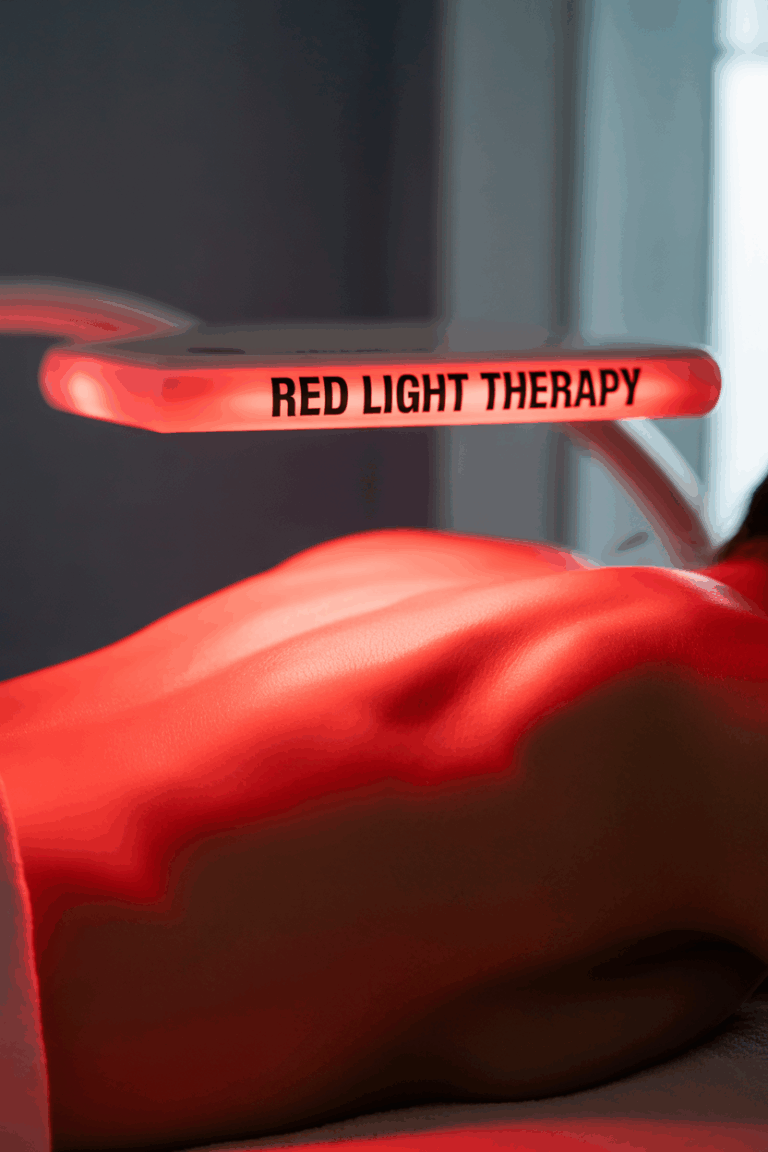Red Light Therapy For Parkinsons? Heres How It Works

Red Light Therapy for Parkinson’s: A Scientific Overview
Studies show that red light therapy reduces the severity of Parkinson’s disease symptoms. This research-backed therapy offers promising results for those suffering from this neurodegenerative condition. By understanding the science behind it, patients can make informed decisions about complementary approaches to managing their symptoms.
Red light therapy works by improving several biological processes that are often compromised in Parkinson’s patients. These include ATP (energy production), vasodilation (blood flow), autophagy (cellular waste removal), and beneficial changes to gut bacteria profiles.
While most research has been conducted on animal models, improvements have been noted in multiple symptom areas including gait freezing, mobility, tremor, speech, and fine motor skills.
How Red Light Therapy Actually Helps People With Parkinson’s
The Food & Drug Administration prohibits claims about cures and treatments for Parkinson’s disease. The information presented here is based on scientific research rather than medical recommendations.
Research indicates that Parkinson’s symptoms reduce significantly in the presence of 810 nm infrared light pulsed at 40 Hz. This specific wavelength and frequency appear to be particularly effective for neurological applications.
When delivered through the nose and on the scalp, infrared light has shown to reduce mobility issues, tremors, and gait dysfunction. Many patients also experience reduced anxiety, depression, and insomnia as secondary benefits.
The therapeutic effects likely stem from improved mitochondrial function, reduced inflammation, and enhanced neural connectivity in affected brain regions.
Red light therapy may help preserve dopaminergic neurons, which are progressively lost in Parkinson’s disease, potentially slowing symptom progression when used consistently.
Why Pulsing Infrared Light Makes a Difference
Many successful Parkinson’s studies use red light therapy that pulses at specific frequencies, particularly 40 Hz. This pulsation may drive photons deeper into brain tissue, though this theory is still under investigation.
A confirmed effect of pulsation is brainwave entrainment. 40 Hz falls within the gamma brainwave range, which is associated with peak cognitive function and neural synchronicity.
Neurodegenerative disease patients are often deficient in gamma brainwaves. By entraining neurons to fire at 40 Hz, red light therapy may restore healthy neural synchronicity and communication.
Alternatively, 10 Hz pulsation corresponds to alpha brainwaves, which are associated with a relaxed yet alert state. For patients experiencing anxiety, irritability, or agitation, this frequency might be more beneficial.
Some therapeutic protocols recommend using different frequencies at different times of day – gamma (40 Hz) in the morning for cognitive alertness and alpha (10 Hz) in the afternoon for relaxation.
The pulsing frequencies appear to work synergistically with the wavelength to produce optimal neurological benefits for Parkinson’s patients.
Breakthrough Research: The 2021 Parkinson’s Study
A landmark study published in BMC Neurology examined the effects of photobiomodulation on Parkinson’s disease symptoms. Researchers used the Vielight Neuro Gamma device on twelve Parkinson’s patients.
The treatment protocol included application to the head, intranasal passage, neck, and abdominal area. After 12 weeks, participants showed significantly improved mobility and balance.
Remarkably, these improvements lasted at least one year when measured during follow-up assessments. The therapy proved both safe and effective, with participants reporting satisfaction with their functional gains.
The study protocol involved a specific schedule: three sessions weekly for four weeks, followed by two weekly sessions for four weeks, then one weekly session for four weeks, and finally maintenance sessions three times weekly for 25-40 weeks.
This gradual tapering followed by maintenance therapy appears to be key for sustaining the neurological benefits in Parkinson’s patients.
Recent Discoveries: Neurochemical Study Findings
A recent study using rat models provided deeper insights into the neurochemical effects of red light therapy for Parkinson’s-like conditions. Researchers induced Parkinson’s-like symptoms using reserpine before administering red light therapy.
The results were striking. Treatment with transcranial infrared laser restored locomotor activity and reduced anxiety-like behavior in the subject animals.
At the biochemical level, the therapy recovered normal levels of malondialdehyde, nitric oxide, and glutathione in the midbrain and striatum, indicating reduced oxidative stress – a key factor in Parkinson’s progression.
The treatment also restored the activities of crucial enzymes including Na+, K+-ATPase, acetylcholinesterase, and monoamine oxidase in key brain regions.
Perhaps most significantly, the therapy restored serotonin and norepinephrine levels to normal values and improved dopamine levels in the midbrain and striatum – addressing the central neurochemical deficit in Parkinson’s disease.
These findings suggest that red light therapy doesn’t just address symptoms but may help normalize the underlying neurochemical imbalances characteristic of Parkinson’s disease.
Finding the Right Device for Your Parkinson’s Therapy
When considering red light therapy for Parkinson’s symptoms, several device features are particularly important. The wavelength should be in the near-infrared range (typically 810nm), which penetrates deeper into brain tissue.
Devices that offer pulsing capabilities, particularly at 40 Hz (gamma) and 10 Hz (alpha), provide the brainwave entrainment benefits observed in clinical studies.
For home use, devices should be user-friendly while still delivering therapeutic doses. Combination devices that treat multiple areas (head, intranasal, neck) may offer more comprehensive benefits.
The Vielight Neuro Gamma or combination systems were used in successful clinical trials, making them evidence-backed options. However, these represent just one approach to delivering therapeutic light.
When selecting a device, consider coverage area, power density, ease of use, and whether the technical specifications match those used in published research.
Remember that consistency of use appears to be a key factor in achieving and maintaining benefits, so choose a device that fits comfortably into your daily routine.
How to Create Your Own Effective Treatment Plan
Based on successful clinical studies, an effective red light therapy protocol for Parkinson’s typically follows a structured schedule with gradually decreasing frequency.
Initially, sessions occur three times weekly for four weeks to establish a baseline response. The frequency then tapers to twice weekly for four weeks, followed by once weekly for four weeks.
After this initial 12-week protocol, maintenance sessions three times weekly help sustain the benefits. Each session typically lasts 20-35 minutes, depending on the specific device used.
For optimal results, consistency is crucial. Setting a regular schedule and tracking symptoms can help determine the most effective frequency and timing for individual needs.
Some patients find that morning sessions with higher frequency (40 Hz) provide cognitive benefits, while evening sessions at lower frequency (10 Hz) may help with sleep and relaxation.
Remember that results typically develop gradually over several weeks, so patience and persistence with the protocol are important.
What to Know About Side Effects and Safety
Red light therapy is generally considered very safe, with minimal side effects compared to pharmaceutical interventions. However, there are some important precautions to consider.
People with epilepsy should avoid pulsed light therapy as it could potentially trigger seizures. Similarly, those taking photosensitive medications should consult their doctor before beginning red light therapy.
The most commonly reported mild side effects include temporary headaches, increased light sensitivity, a “buzzing” feeling, and sleepiness lasting approximately 24 hours after treatment.
Excessive tiredness is more frequently observed in brain injury patients than in those with Parkinson’s, but the shared mitochondrial dysfunction aspects of these conditions could produce similar reactions.
These side effects are typically mild and temporary. Compared to pharmaceutical treatments for Parkinson’s, red light therapy has an excellent safety profile with minimal risk of serious adverse events.
As with any complementary therapy, it’s advisable to discuss red light therapy with your healthcare provider, especially if you’re currently undergoing other treatments for Parkinson’s disease.
The Surprising Gut-Brain Connection in Parkinson’s Treatment
Emerging research suggests a strong connection between gut health and neurological conditions, including Parkinson’s disease. Red light therapy may benefit Parkinson’s patients not only through direct brain effects but also by improving gut biome balance.
Studies show that red light therapy can positively influence the Firmicutes to Bacteroidetes (F:B) ratio in gut bacteria. This ratio is often disrupted in Parkinson’s patients and may contribute to disease progression.
The enteric nervous system (sometimes called the “second brain”) contains millions of neurons that communicate with the central nervous system. Improving gut health may therefore have downstream effects on neurological function.
Some therapeutic protocols include abdominal application of red light specifically to target the gut microbiome. This approach recognizes the holistic nature of the disease beyond just brain pathology.
The gut-brain axis represents an exciting frontier in Parkinson’s research and may explain why comprehensive red light therapy approaches yield benefits beyond what would be expected from brain stimulation alone.
Dietary considerations alongside red light therapy may further enhance this gut-brain relationship for improved symptom management.
Using Red Light Therapy Alongside Traditional Treatments
Red light therapy appears to work best as a complementary approach alongside conventional Parkinson’s treatments rather than a replacement for established medical care.
When used alongside prescribed medications, red light therapy may enhance overall outcomes and potentially allow for more stable symptom management over time.
Some patients report that consistent red light therapy sessions help reduce the “off” periods experienced with traditional Parkinson’s medications, though more research is needed in this area.
Physical therapy and exercise programs may become more effective when combined with red light therapy






